Garlic is a favorite culinary ingredient in many different dishes and cuisines. It is also known to have numerous potential health benefits, so it’s no wonder many people, myself included, always have some fresh garlic available in the kitchen or the garden. But what happens if you find a head of garlic that tastes bitter? In this article, I’ll tell you everything that you need to know about why your garlic can potentially taste bitter.
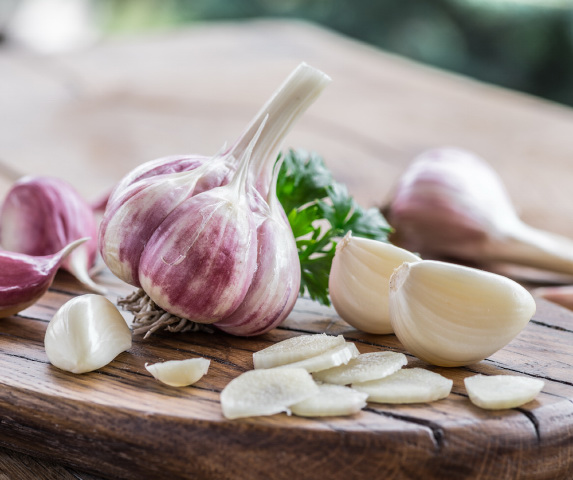
Table of Contents
- Why Is My Garlic Bitter?—The Short Answer
- How Does the Age of Garlic Affect Its Taste?
- How Cooking and Preparing Garlic Affects Its Taste
- Organic vs. Non-Organic Garlic
- How to Grow and Harvest Garlic for the Best Taste
- Growing Garlic for Best Taste
- Harvesting Garlic for Best Taste
- How to Store Garlic to Ensure the Best Taste
- Is It Safe to Eat Bitter Garlic?
Why Is My Garlic Bitter?—The Short Answer
Even though it’s powerful and pungent, fresh garlic should never have a bitter flavor. If your garlic has a bitter taste, it’s most likely because it was not fresh, stored incorrectly, or cooked for too long.
How Does the Age of Garlic Affect Its Taste?
Fresh garlic has a very long shelf life. In fact, an unpeeled head of garlic can last up to six months or more (reduces to about three weeks when the garlic cloves are separated but still have the peel). If you peel the garlic head or the clove, it also significantly reduces the shelf-life. Peeled garlic cloves will only last you about a week when stored properly.
Garlic that is just starting to get old will begin to have a bitter taste, which, although not harmful, might prove noticeable to some people when consuming it. However, you should not consume garlic that has gone bad and should instead immediately toss it.
If you’ve lost track of the amount of time that the garlic has been hanging around, or wondering if it’s spoiled, here are some things you can look for to determine that it’s past its prime and has gone bad.
The Garlic Smell and Feel is Off
Yes, garlic has a strong smell that is slightly spicy, but it’s also a recognizable smell. If your garlic starts to rot, the smell will be even more pungent than usual and may even start to smell sour. This “off” smell indicates it’s time to simply toss the garlic.
How the garlic head feels when you hold it can also indicate that it is starting to go bad. A fresh head of garlic will feel hard in your hand, and the head will tightly hold the cloves together. If your garlic feels like it’s starting to get soft or mushy, or the head is starting to separate, it’s a good indication that it’s getting past its prime.
The Garlic Has Brown Spots, or the Color is Off
Fresh garlic should have a bright off-white color without any noticeable spots. If your garlic is starting to turn yellow or has brown spots, it’s a sign that it may be toward the end of its shelf life.
Fresh garlic also tends to look shiny and feel moist when you peel it. If it looks dull and dry, it is old.
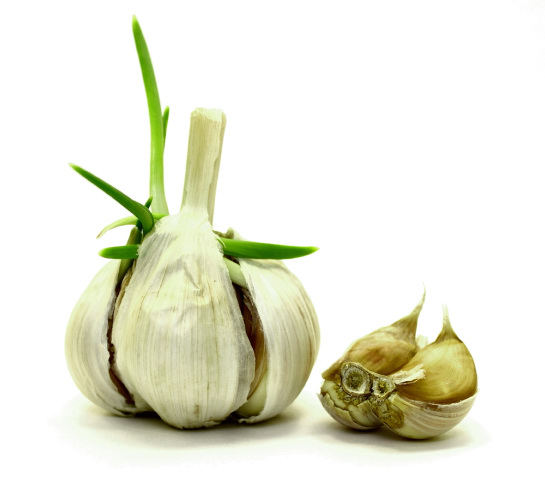
A Note About Garlic that is Starting to Sprout
Many people think that once the garlic grows green sprouts at the top, it has gone bad and is no longer useable. However, this assumption can prove a misconception. It’s true that this process naturally happens as the garlic ages, and it can cause the taste of the garlic to become slightly bitter. Nevertheless, if the look and feel of the garlic head otherwise seem okay, you can simply chop off the green roots and use the garlic as usual.
Sometimes this garlic will also have a green “sprout” in the middle of the clove, which can also lead to bitterness in the taste. Simply remove this part of the garlic clove, known as the “inner germ,” to remedy the problem. Discard it, and you should be able to mince up the rest of the clove and use it as usual.
How Cooking and Preparing Garlic Affects Its Taste
If you have garlic that is starting to taste bitter, you can often mask its taste by using it in dishes with more complex flavors, such as stews, pasta sauces, or stir-frys. The other flavors in these dishes will help tone down the bitter taste of the garlic, but you will still get the health benefits and signature spice flavor. However, some other preparation and cooking tips can help ensure that your garlic tastes its best.
Use Sliced or Minced Garlic Almost Immediately
Once you slice or mince a clove to use, even if it’s a fresh head, use the garlic almost immediately, rather than letting it sit for a while. This suggestion means that you should not chop up the garlic a day before cooking, but rather prepare the garlic at the time when you want to use it for cooking.
The reason for not letting garlic sit too long is due to the natural oil diallyl disulfide inside of the garlic, which can turn bitter when exposed to air. The smaller your garlic is chopped or minced, the more of this oil it will release and the quicker it will start to turn bitter if not used immediately.
Saute Garlic Slowly Over Low Heat
Another common mistake people make that can cause garlic to taste bitter is overcooking it. The best way to release garlic’s natural, pleasant flavor, is to saute it slowly over low heat. Overcooked garlic will tend to taste bitter.
A lot of people will add the garlic to the pan at the same time that they saute other vegetables like onions or celery. However, the proper way to add garlic to a dish is to wait until the other aromatic vegetables have softened or add it towards the end.
Organic vs. Non-Organic Garlic
As with most vegetables, purchasing organic options will ensure that you do not have added chemicals and pesticides that can alter the taste. Garlic is no exception.
Even though garlic is not typically ranked on the “Dirty Dozen” list by the Environmental Working Group, conventional farmers still use pesticides and herbicides when growing this crop.
Additionally, farmers tend to treat conventionally-grown garlic with other chemicals that help to prevent the sprouting that naturally happens as it ages.
All of these additives can negatively affect the overall taste of the garlic and can also cause it to seem bitter.
Your best bet for the freshest and best tasting garlic is to purchase organically-grown garlic from local farmers or farmers’ markets or grow your own at home.
How to Grow and Harvest Garlic for the Best Taste
Garlic is not a difficult crop for most gardens to grow in their home gardens, and there are many different varieties to choose from for your specific growing conditions. You can even start growing it directly from a single clove that you pick off a purchased head.
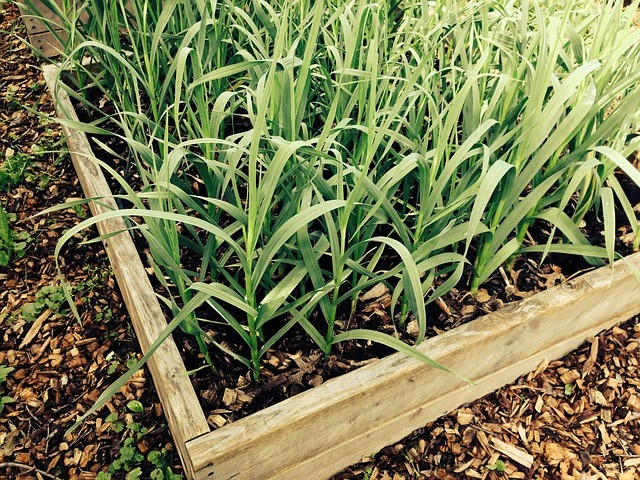
Growing Garlic for Best Taste
If you’re growing garlic in your home garden, make sure that you select a spot that has full sun. Garlic requires six or more hours of direct sunlight daily. It’s also a slow-growing crop and, when planted in the fall, won’t be ready to harvest until the following summer.
Although some gardening websites will tell you that you can grow garlic in containers, it does not make the best-suited crop for this type of environment and will tend not to grow very big. Garlic does better when planted directly in the ground and has the right amount of space.
Garlic is a natural pesticide and resistant to many typical garden pests. Avoid using pesticides to ensure that it has the best taste.
Related Reading: How To Grow Garlic: Growing And Harvesting The Best Garlic
Harvesting Garlic for Best Taste
You want to make sure that you don’t harvest your garlic too early or too late, as both of these things will affect its taste. Looking at the leaves, you can tell when garlic is ready to harvest. Once one-third of the leaves start to look brown, loosen some of the dirt above the bulb to check the size. You can pull the garlic up from the ground if the bulbs seem large enough. If the bulb still seems small, let it grow a bit more.
However, if you don’t watch carefully, you could leave your garlic in the ground too long. If the leaves start reaching more than one-half brown, harvest the bulb regardless of size. If you wait until the leaves have been browned entirely, your garlic will not taste palatable. It’s typically best to harvest your garlic a little before it is ready (and have a smaller head) than wait until it’s too late and tastes terrible.
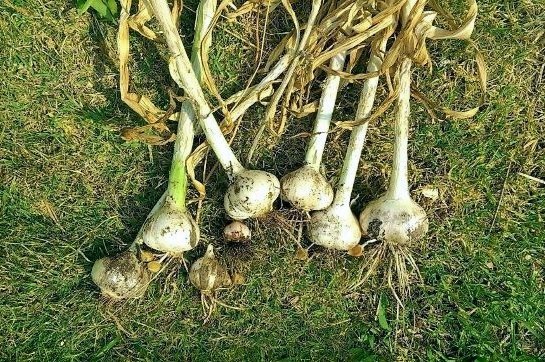
How to Store Garlic to Ensure the Best Taste
As mentioned earlier, garlic does have a long shelf-life, and when properly stored, it can last up to six months without going bad. You definitely want to ensure that you keep it in the correct type of environment, though, to prevent it from starting to rot and affect its taste prematurely.
It’s best to keep your garlic unrefrigerated and in a cool, dark place with good ventilation. Placing garlic heads in the refrigerator can cause them to sprout more quickly. The ideal temperature for fresh garlic heads is between 50 to 60 degrees Fahrenheit (10-15 °C) and about 60 percent humidity.
Finally, light doesn’t typically harm storage, but you should avoid storing your garlic near direct sunlight. Some people find that a special “garlic keeper” helps keep sunlight away and regulates the proper temperature and humidity.
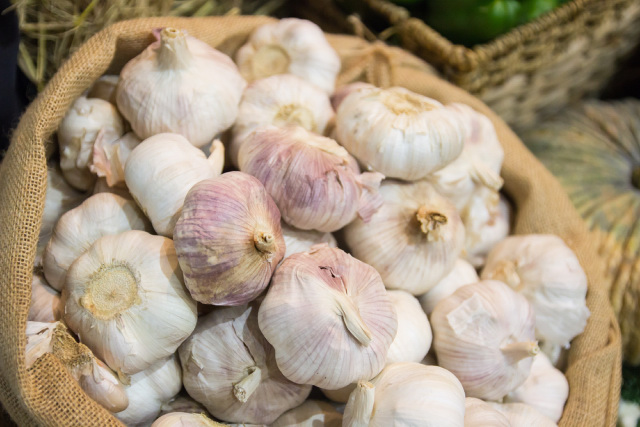
Is It Safe to Eat Bitter Garlic?
Suppose your garlic has gone completely bad based on the visual observations. In that case, you will definitely want to toss it instead of eating it to reduce the risk of any potential illness (especially if it’s moldy or mushy).
However, if your garlic is just a bit older and starting to sprout, has a couple of brown spots, or hasn’t yet gone mushy, you can still use it rather than let it go to waste. If it only has a slightly bitter taste, you can help mask it with the other flavor profiles in the dish.
Further Reading:
